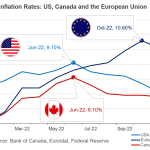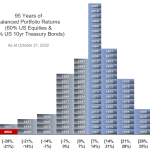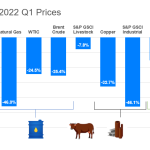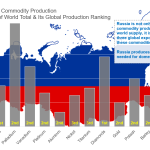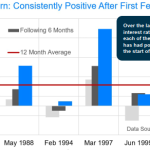Pacifica Partners 2013
Winter Newsletter – Debt, Profits, Canada & more
>If the
embedded document above is not
visible, the text and charts have also been included below as follows:
Turning the Page on the Fiscal Cliff
In
the final hours of the 2012 trading year, the financial markets showed
their relief that Congress and the White House had reached an agreement
and the “Fiscal Cliff” would be averted. The collective attention of
the markets is now turning to the Debt Ceiling talks which involve
Congress signing off on yet another increase in the borrowing limits of
the US. Given that the US debt limit has been raised at
regular intervals, some Congressional members are not willing to rubber
stamp yet another debt limit increase. This sets the table
for the next potential fight between Congress and the President and is
one that could upset investor portfolios. Essentially, the
“national credit card” of the US could be maxed out against the debt
ceiling. Without an agreement that would allow the US to borrow more,
the US could begin to default on its $16.4 trillion debt. The markets
would not take kindly to such an event.
Fortunately,
this is not a high probability event – though it could
still provide the markets a bumpy ride. Currently, the markets are
pricing in a scenario of yet another 11th hour deal.
Investors here find themselves at polar opposites. The pessimistic side
believes that the national debt is too high a hurdle for the economy to
overcome and the deleveraging process will continue for some time yet.
The bullish argument is that the economy is on the mend with a
rebounding housing and auto sector leading the way. Add in low
inflation, a Federal Reserve willing to hold interest rates lower for
longer, and rising corporate earnings and we have an attractive
environment. Globally, central banks are continuing their bold efforts
to seemingly do whatever it takes to ensure their respective economies
are strengthened. Nearly 40 central banks around the world are engaged
in aggressive monetary easing in order to stimulate their economies.
Putting Money to Work
Investors
have been so cheered by this backdrop that for the week ending January
9th, they have put more capital to work into equity mutual funds in the
US than any other single week since October 2007. A similar occurrence
took place when US markets were peaking before the financial crisis.
This is a marked turnaround from the trend that has prevailed for the
last five years as investors withdrew close to $500 billion from US
equity mutual funds while adding $1.2 trillion to bond funds according
to the Investment Company Institute (see chart above).
This trend has also caught on in emerging markets (China, India,
Brazil, Russia, etc.). According to Morgan Stanley, emerging market
stock funds have seen cash inflows for 18 consecutive weeks. In
comparison the previous record was 29 weeks of money inflows ending
December 2010.
As we have highlighted over the years, such data points are not
comforting. In fact, extremes in investor fund flows tend to be a
contrarian indicator as mutual fund investors often invest by piling
into fads or assets that have already been bid up. It should be noted
that the last time we observed this much of an increase in investor
risk appetite, US equities tumbled 57 percent in almost 18 months after
the S&P 500 stock market index reached its peak in October
2007. However, no one indicator can be used in isolation and
there is currently a modest undercurrent of strength to the global
economy.
Any Deal is Better than No Deal Officially called the American Taxpayer Relief Act of 2012, the fiscal
cliff deal will raise revenue of $617 billion over the next ten years
as compared to the option of allowing the Bush tax cuts to carry on.
Over $540 billion will come from households making over $1 million per
year. While the budget deal provides markets with temporary relief from
anxiety, critics believe that the tax impact will actually raise taxes
on almost 80% of US taxpayers through higher income taxes, payroll
taxes or both. They state that the impact of the higher taxes will hurt
the economy while the US federal deficit will likely remain in the
frightening $1 trillion range and the debt-to-GDP ratio for 2013 will
still climb to about 107% of GDP from the current 100% level. The
budgetary challenge for the US will lie in whether or not the increase
in tax revenues outweighs the drag on the economy that those same tax
increases will create. Looking at the US budgetary numbers, this much
is clear: the budget will continue to be a headwind until the
tough
decisions on spending controls on entitlement programs and defense
budgets are made.
Canada is going to be impacted by whatever route the US economy takes.
Domestic challenges to the Canadian economy are only now starting to
make the front pages. For some time, our commentaries and newsletters
have tried to make the point that Canadian consumer debt, elevated
house prices and accelerating government spending at the federal,
provincial and municipal levels could combine to hinder future economic
growth.

The Bank of Canada has kicked off 2013 with some candid comments
suggesting the economy is going to take longer to recover and rates
will stay low for sometime. One of the objectives of the fiscal and
monetary authorities in Canada has been to slow the increase in
household credit. To this end, the data are moving in the
right direction as the increase in household credit has been moderating
from a 5.5% growth rate to a little more than 3% in the most recent
quarter. This is the lowest rate of growth since 1999 and is being led
by slowing mortgage credit. However, the troubling fact is that this
slower increase in credit is still above the growth of disposable
income which means that consumer debt is still rising faster than
incomes.
Amazingly, in a few short years Canadian consumers have managed to
increase their debt levels to beyond the levels that US consumers had
at the beginning of the collapse in the US real estate market. The
latest data from the Bank of Canada shows that the ratio of household
debt to income is at 165%.
Therein lies the challenge for Canada’s economy. Canadian consumer
spending accounts for 58% of GDP but debt levels are already at record
highs. Thus, consumer spending will not be able to lead in any
significant way a potential rebound in economic growth. As the chart
above shows, Canada’s leading economic indicators point to a Canadian
economy that will lag the United States and the rest of the G7.
While Canadians have been accustomed to tax cuts over the last fifteen
years, it is highly unlikely that Canadian taxes will be able to fall
any further. The deterioration in the budgetary picture at all levels
of government will likely mean higher taxes – further restraining the
economy and disposable income.
Profits and Expectations
For several quarters, most analysts have been lowering their
expectations for profit growth. This is due to the fact that GDP
numbers for much of the world are coming in lower than expected.
However, as the bar has been lowered successively, most companies have
been able to jump over the bar to the relief of investors. The bearish
argument around corporate earnings is that earnings growth has slowed
and revenue growth has all but stalled. According to data from Thompson
Reuters, current expectations are for US corporate earnings
to rise 1.9% year over year. Three months ago, expectations were for a
9.9% annual increase and six months ago it was for a 13.7% increase.
Clearly, expectations have come down.
This
is significant because revenue growth is tied to growth of the economy
(GDP growth). If GDP growth rates stall or come in under
expectations, corporate revenue is likely to come in under
expectations. Therefore, corporations would not be able to
meet the expectations that are built into stock prices. Thus far,
fourth quarter 2012 earnings announcements are beating expectations by
more than 2 to 1 – albeit on lowered expectations.
Currently, the S&P 500 is trading at a level of approximately
13.2 times 2013 earnings estimates which makes the market cheaper than
the longer term average of closer to 15 times. While the US stock
market is not cheap, it is fairly valued. In order for the
market to continue to be fairly valued, global GDP will have to
continue to strengthen and corporate profit margins must hold steady.
As a percentage of US GDP, corporate profit margins in the US are at
record highs as wages have been restrained, interest rates are low and
corporate balance sheets are pristine.
These characteristics have allowed S&P 500 corporations to buy
back over 8 billion shares (net) over the last twenty-one months,
thereby providing support to stock prices. As of 3Q 2012, the
S&P 500 companies had about 300 billion shares outstanding –
which was the lowest number of shares since mid 2009.
While the markets have somewhat elevated expectations, an improving
economy and a calmer macro- economic environment will help to support
the markets. The key outcome to monitor will be to see whether revenue
growth, corporate profit margins, and earnings continue to make stocks
an attractive asset class.

Pacifica
Partners – Capital Management
Navigating
a Sea of Opportunity

This
report is for information purposes only and is neither a solicitation
for the purchase of securities nor an offer of securities. The
information contained in this report has been compiled from sources we
believe to be reliable, however, we make no guarantee, representation
or warranty, expressed or implied, as to such information’s accuracy or
completeness. All opinions and estimates contained in this report,
whether or not our own, are based on assumptions we believe to be
reasonable as of the date of the report and are subject to change
without notice. Past performance is not indicative of future
performance. Please note that, as at the date of this report, our firm
may hold positions in some of the companies mentioned. Social
Media: It is Pacifica Partners Inc.’s policy not to respond via online
and social media outlets to questions or comments directed to it or in
response to its online and social media
publications. Pacifica Partners does not
acknowledge or encourage testimonials posted by third party
individuals. Third party users that have bookmarked Pacifica
Partners’ social media publications or profile through options
including “like”, “follow”, or similar bookmarking variations are not
and should not be viewed as endorsement of Pacifica Partners Inc., its
services, or future or past investment performance. To view our full
disclaimer please click
here.
Copyright
(C) 2013 Pacifica Partners Inc. All rights reserved.
